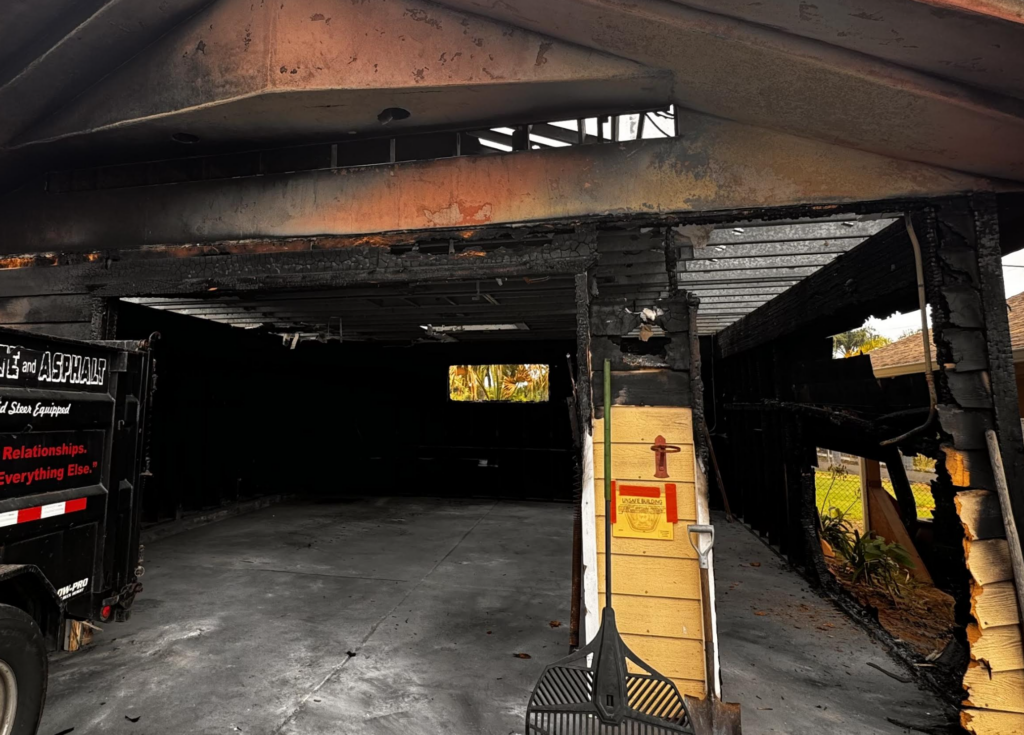
This is the third garage fire I’ve seen that was started by lithium batteries!
Why are lithium-ion batteries flammable?
Lithium-ion batteries store a lot of energy in a small amount of space. When that energy is released in an uncontrolled manner, it generates heat, which can turn certain internal battery components into flammable and toxic gases.
How do fires from lithium-ion batteries start?
Lithium-ion battery fires happen for a variety of reasons, such as physical damage (e.g., the battery is penetrated or crushed or exposed to water), electrical damage (e.g., overcharging or using charging equipment not designed for the battery), exposure to extreme temperatures, and product defects.
What are some unique dangers of lithium-ion battery fires?
Heat, smoke, the release of toxic gases, and the potential for explosions are the dangers associated with lithium-ion battery fires.
What are some safety tips for buying, charging, storing, and using lithium-ion batteries in devices like laptops, phones, tools, and more?
- Purchase batteries that are only listed by a nationally recognized testing laboratory and labeled accordingly.
- Stop charging a battery once it is full.
- Use charging equipment that is only compatible with your device. To be safe, use only the charging equipment that is supplied with your device.
- Stop using your device if the battery shows signs of damage, such as an unusual odor, excessive heat, popping sounds, swelling, or change in color.
- Have all repairs performed by a qualified professional.
Where is the safest place to charge batteries in e-bikes and electric vehicles?
When it comes to e-bikes, e-scooters, and electric vehicles, the safest place to charge these devices is outdoors away from any structure or enclosure and not in direct sunlight. Do not charge a battery when either the charger or the battery is damaged. Do not store batteries in extremely hot or cold locations or in an area that blocks the only exit out of to a room. And do not attempt to modify the battery or charger.
https://www.nfpa.org/education-and-research/home-fire-safety/lithium-ion-batteries




I’m “lucky.” We have residential early 1960s “All Electric” service. 240v Three Phase 200A service. That’s the reason so many of my neighbors have got EVs. There’s no way the grid can accommodate the expected demand in California’s 2030 Net Zero fantasy.
Rancho Palos Verdes just lost electricity. Shrug. Diesel generators. They won’t leave until the water is shut off.
240v Three Phase 200A service
Geez, the Rolling Stones could play at your house!
Perched atop a majestic cliff, Rancho Palos Verdes is a stunning city by the sea. Those who live here do so for the grand views of the ocean, the lush valleys, the breeze that sweeps away the heat of the sun.
But the scene on this peninsula 30 miles south of downtown Los Angeles comes with a caveat. Underneath the multimillion-dollar homes is a large complex of landslides. Every day, the ground moves.
For a long time, that movement was so glacial — about an inch a year — it was accepted simply as a quirk of the region.
Now, for some residents, it has become catastrophic. Across a span of one square mile, the pace has quickened to nearly four feet a month.
Homes have been yanked apart at the seams, and some have collapsed altogether, their sunken roofs and splintered walls swallowed halfway into the earth. The gas was shut off more than a month ago to a swath of residents. They have since been hunkering down, relying on electric hot plates or propane, scrambling for answers before their life savings cave in around them, too.
Over the weekend, a distressing update arrived for a community there known as Portuguese Bend. The power was turned off to 140 homes, and the loss of electricity threatened sewer systems. Residents were told to be prepared to leave.
“That was pretty devastating,” a longtime resident, Sallie Reeves, 81, said about the news. She and her neighbors felt they were blindsided by the announcement after having been assured that they would retain electricity.
Ms. Reeves has spent months battling shifting walls and gaping holes in her three-bedroom house. At the same time, she has had to care for her husband who was disabled by a stroke.
But like most of her neighbors, she is not waiting around to be saved. She has reached out to contractors and made numerous calls in attempts to get a loan to reinforce her house with a steel foundation. She refuses to be ousted from the home where her two children were raised.
While news of a power shut-off at first moved her to tears, she is forging ahead.
“Today I woke up thinking, ‘They don’t know who they’re dealing with,’” she said on Sunday. That morning, she had been heartened watching trucks hauling in generators donated by a neighbor.
“It makes me remember why I’m here and why I love this community so much,” she added. “It’s not just the nature, it’s the people who are wonderful.”
By Sunday evening, homeowners were even more determined to stick around, having banded together to install generators that would keep the sewer lines running.
The notion that they might evacuate and with such short notice is ridiculous, said Tom Keefer, 67, who manages an apparel wholesale building and moved to the neighborhood three years ago.
“They can send all the warnings they want,” he said. “We’re not leaving.”
(Thanks Susie for sending it in!)
Speaking of Rancho Palos Verdes, I just ran across this excellent YouTube video that goes into greater detail Massive Rancho Palos Verdes Landslide in California